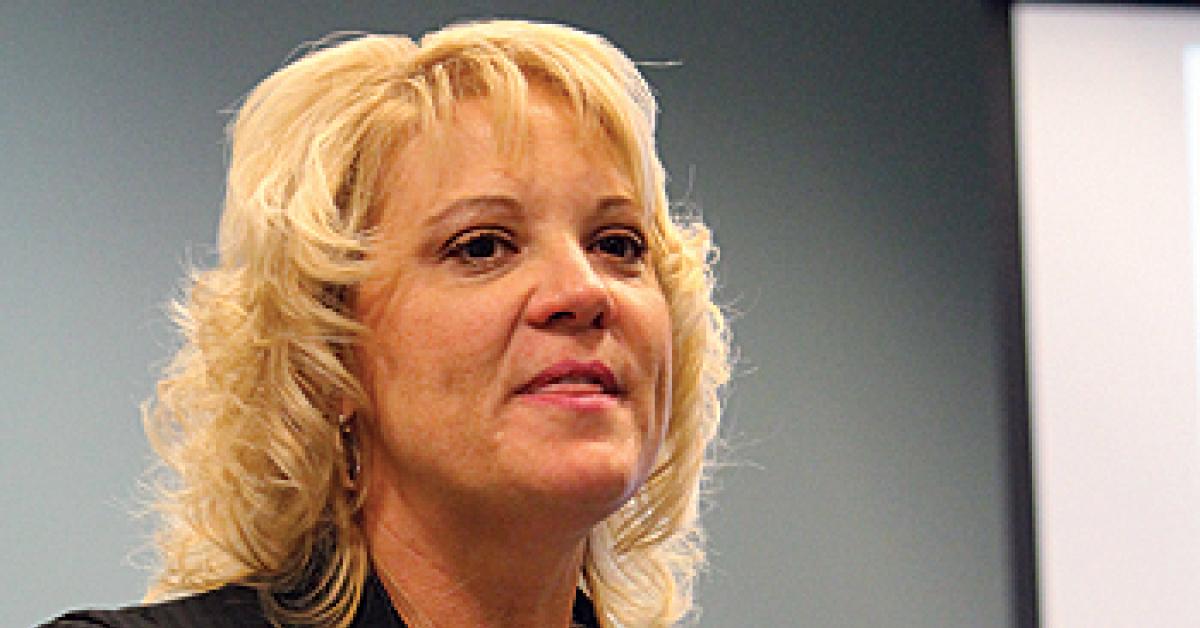LONG BEACH, Calif. — Providing good customer service was a common theme among the dry cleaning professionals presenting educational sessions during the recent Fabricare convention in Southern California. And Cleaner’s Supply’s Trudy Adams, the New York-based dry cleaning supplier’s director of customer service and sales, believes nothing is more integral to the health of a service-oriented business.
MAKE A CONNECTION
Adams recently visited a dry cleaner to provide customer service training at his request. As she sat in the lobby that day, this is what she heard from the CSR working the counter: “Phone number. … When do you want it? … OK, you’re all set.”
The CSR was missing prime opportunities to connect with customers and continue to build on their relationship. “I hear this excuse all the time: ‘They’re in a hurry. They don’t want to talk to me.’ OK, maybe 95% of customers really want to stand there and talk, 5% are in a hurry. You can monitor your conversation with the pace of the customer. We train that with our reps.”
By taking a few moments to ask if the garments they’re dropping off contain any specific stains or require special attention, you will convey that “I care about your clothes.”
And use these opportunities to up-sell or cross-sell.
Educate your customers about the variety of services you have available. “For example, somebody is bringing in sweaters. Say, ‘For an extra $3.99, I can put that in a really nice breathable sweater bag for you.’ I know it doesn’t cost $3.99 for a bag.” If they decline, so be it, but make the attempt, Adams says.
EMBRACE COMPLAINTS
“You will be judged not by what you do correctly, but how you handle a complaint,” Adams says.
Above all, don’t ignore them, and don’t be afraid to admit when you’re at fault. “It’s usually an accident. Accidents happen. We all make mistakes. We all, every day, have something that went wrong somewhere. (It’s about) how we handle it, how you embrace it, how you encourage your staff to tell you.”
Adams suggests that every cleaner maintain a “complaint log” that documents every customer gripe and how it is handled. “What if you have a bad pad on a press, you’re getting lines, and nobody’s telling you that you’ve got customers coming in complaining. Or maybe somebody just hasn’t been trained right on how to do a press. It may not be a human error, it may be that something needs to be fixed, and how are you going to know if you ignore the complaints?”
There’s a common saying in business that the customer is always right. Does Adams believe that?
“The customer is not always right, but we need them. … No, they’re not always right, but it’s our job to make them feel like they’re right. And it’s our job to take care of it and say, ‘I’m sorry.’ … If it’s something that you can do, and it’s just a normal redo, then, my goodness, redo it, quickly, and thank them.”
Thank them for bringing the matter to your attention, then investigate to determine what caused the problem. “Why did that person’s button not get replaced? Did somebody miss it? Was somebody out that day? Is somebody new? What happened?”
What does a customer with a complaint want? “They want to be believed. Believe them! Say you’re sorry, and don’t sit there and contradict them. Don’t get that ‘me against the customer thing’ going on, because you’re the customer advocate. You need that customer to stay.
“They want a fair settlement, quick and easy. Show some sympathy. Take responsibility, even if it’s isn’t your fault, because what is it really going to cost you?”
You’re supposed to be on the customer’s side, always, Adams says, so roll out that red carpet.
Have a question or comment? E-mail our editor Dave Davis at [email protected].


